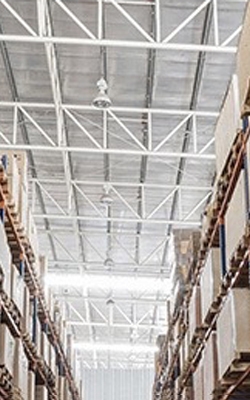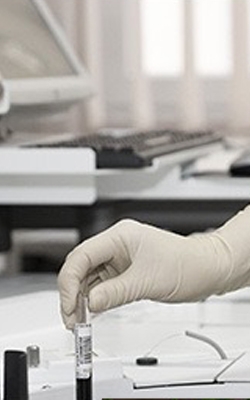The digital humidity temperature meter is designed to be flexible and accurate, serving as the preferred companion for monitoring temperature and humidity levels in various environments. From indoor to outdoor settings, the display screen provides clear and easy-to-read data, including minimum and maximum values, enabling effortless tracking of fluctuating trends over time.

- Compact Design: Small and lightweight, easy to hold in the hand or carry in a pocket, allowing for convenient testing anytime, anywhere.
- High Precision Sensing Probe: Temperature accuracy ranges from 5% to 98% RH, with humidity accuracy of ±4% RH (41 - 80% RH). Sampling frequency of 2.5 times per second ensures rapid and precise measurements.
- Ambient Temperature Sensing: Includes ambient temperature sensing functionality, suitable for environments ranging from 0°C to 50°C, ensuring stability and reliability across various testing conditions.
- Large High-Definition Display: Features a large, high-definition display screen with backlighting, facilitating easy measurement operations in dark environments.
Applications
Digital thermo hygrometers are essential instruments for temperature and humidity monitoring in various fields including agriculture, animal husbandry, industrial production, laboratory settings, nautical applications, and incubators.

Cellar Room

Warehouse

Laboratory

Greenhouse
| Model | SISCO-TH-817 |
| Temperature Range | -10~50°C (14~122°F) |
| Humidity Range | 5.0~98%RH |
| Temperature Measurement Error | ±1.5°C |
| Humidity Measurement Error | ±5%RH (5.0%~40%RH) ±4%RH (41%~80%RH) ±5%RH (81%~98%RH) |
| Temperature Resolution | 0.1C /0.1°F |
| Humidity Resolution | 0.1%RH (probe cannot be placed in water) |
| °C/°F Uunit Conversion | √ |
| Auto Power Off | √ (Automatically shuts down after 5 minutes without any operation) |
| Low Power Reminder Function | √ |
| Data Hold Function | √ |
| Maximum/Minimum Value | √ |
| Update Frequency | 2.5 Times/second |
| Power Supply | 3 AA batteries |
| Net Weight | 65g |
| Dimension | 125* 5025mm |
Dimension

Q1: What is a thermo hygrometer and how does it work?
A1: A thermo-hygrometer is a device used to measure both temperature and humidity in the air. It combines two sensors: a thermometer for measuring temperature and a hygrometer for measuring humidity.
The thermometer sensor typically works by measuring the change in electrical resistance or voltage caused by the temperature change. This change is then calibrated to provide an accurate temperature reading.
The hygrometer sensor measures humidity by detecting changes in capacitance, resistance, or electrical conductivity caused by the presence of water vapor in the air. These changes are then converted into a humidity reading.
Modern thermo-hygrometers often display both temperature and humidity readings digitally, making them convenient and easy to use. They are commonly used in various applications such as weather monitoring, indoor climate control, agriculture, and industrial processes where precise control of temperature and humidity is important.
Q2: Where should I place my hygro thermometer for accurate readings?
A2: To get accurate readings from your thermo hygrometer, it's important to place it in a location that represents the typical conditions of the area you want to monitor. Here are some general guidelines:
- Away from direct sunlight: Direct sunlight can artificially raise temperatures and skew humidity readings. Place the hygro thermometer away from windows or any other sources of direct sunlight.
- Away from heating or cooling sources: Avoid placing the hygro thermometer near heating vents, radiators, air conditioners, or any other sources of heat or cold that could affect the readings.
- In a well-ventilated area: Place the hygro thermometer in a spot with good air circulation to ensure accurate readings of both temperature and humidity.
- At eye level: Try to position the hygro thermometer at eye level or in a location where it's easy to read the display. This will make it convenient to check the readings regularly.
Representative of the space: Place the hygro thermometer in an area that is representative of the space you want to monitor. For example, if you're monitoring the conditions in a greenhouse, place it among the plants at a typical height. - Away from drafts: Avoid placing the hygro thermometer near doors, windows, or other areas where drafts could affect the readings.
Q3: Can thermometer hygrometers be used outdoors?
A3: Yes, thermometer hygrometers can be used outdoors, but it depends on the specific model and its specifications. Some thermometer hygrometers are designed for indoor use only and may not withstand the environmental conditions outdoors, such as exposure to moisture, extreme temperatures, and direct sunlight.
However, there are also thermometer hygrometers specifically built for outdoor use. These models are typically more rugged and equipped with features that make them suitable for withstanding outdoor conditions. They may have waterproof or weather-resistant casings, UV protection for sunlight exposure, and durable sensors.
Before using a thermometer hygrometer outdoors, it's essential to check the product specifications and ensure that it's designed for outdoor use if you plan to expose it to outdoor conditions.
Tips: How do I interpret the readings from a handheld digital humidity temperature meter?
Temperature Reading: The temperature reading is usually displayed in degrees Celsius (°C) or Fahrenheit (°F). Ensure you are familiar with the selected unit of measurement.
Humidity Reading: The humidity reading is typically displayed as a percentage (%). It represents the amount of moisture in the air relative to the maximum amount of moisture the air can hold at that temperature. For example, if the humidity reading is 50%, it means the air is holding 50% of the maximum moisture it can hold at that temperature.
Comfort Levels: Understanding comfort levels can help you interpret humidity readings better. Generally, indoor humidity levels between 30% to 50% are considered comfortable for most people. Below 30% can feel dry, while above 50% can feel humid.
Thank you for buying industrial test and measurement equipment on SISCO.com, all products sold by SISCO and the partner cover a 12 months warranty, effective from the date of receiving the products.
What is covered?
SISCO is responsible for providing free spare parts, and free technical support to assist the customer to repair the defective products until the problem is solved.
What is not covered?
- Product purchased from anyone other than a SISCO store or a SISCO authorized reseller.
- Expendable parts.
- Routine cleaning or normal cosmetic and mechanical wear.
- Damage from misuse, abuse or neglect.
- Damage from use of parts other than SISCO approved.
- Damage from use outside the product’s usage or storage parameters.
- Damage from use of parts not sold by SISCO.
- Damage from modification or incorporation into other products.
- Damage from repair or replacement of warranted parts by a service provider other than a SISCO authorized service provider.
- Damage caused by the application environment not meeting the product usage requirements and the failure to perform preventive maintenance.

